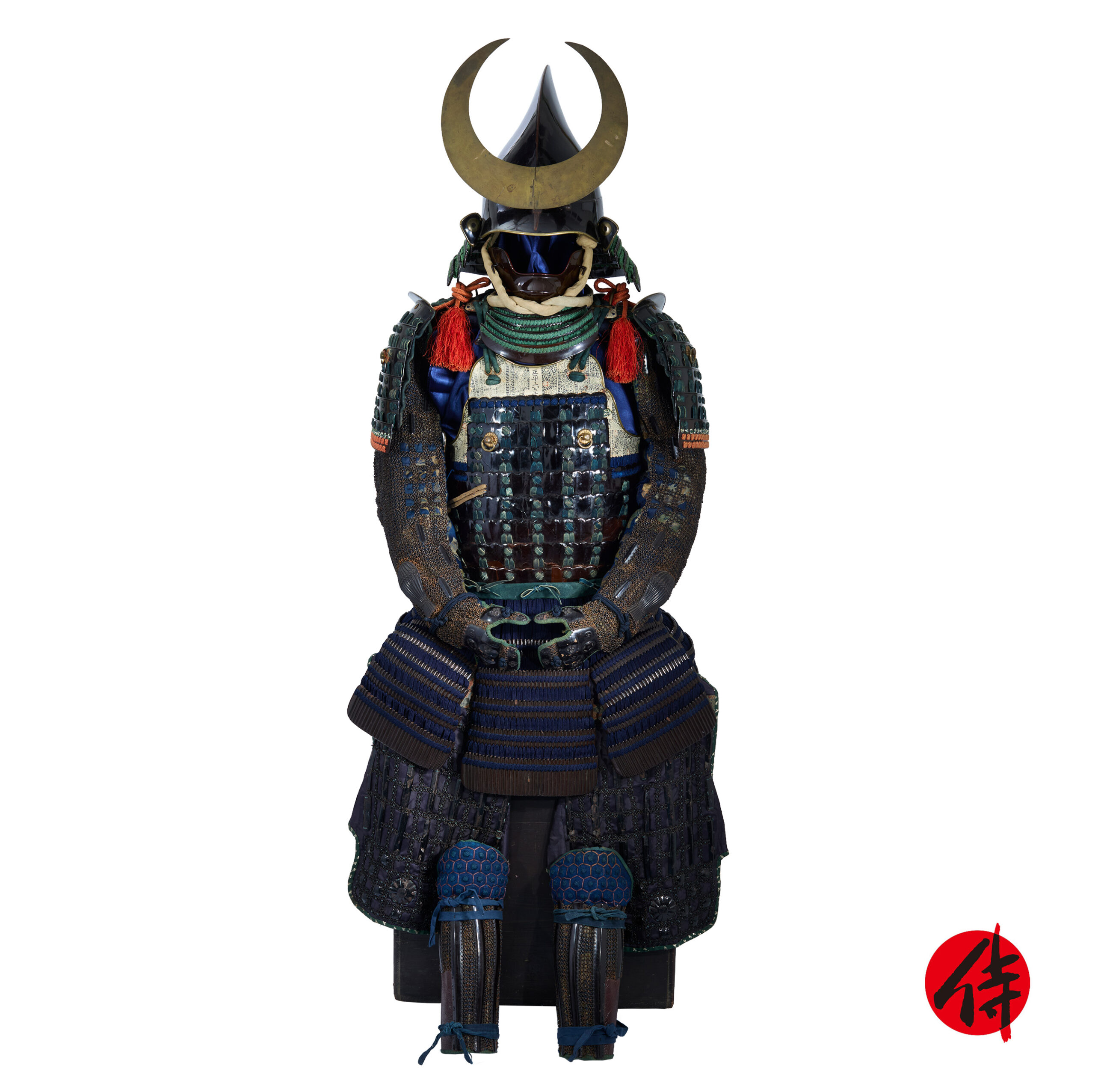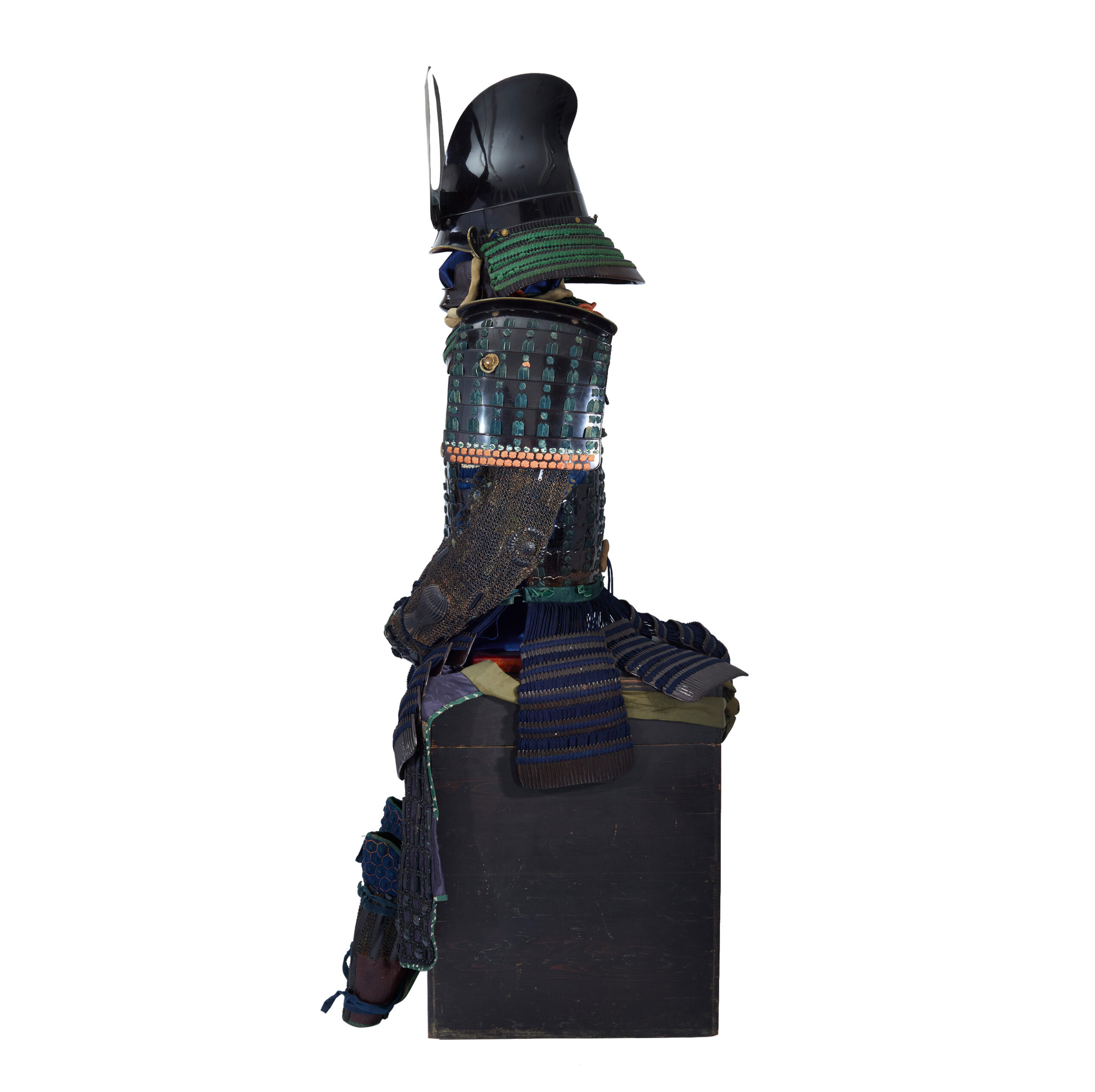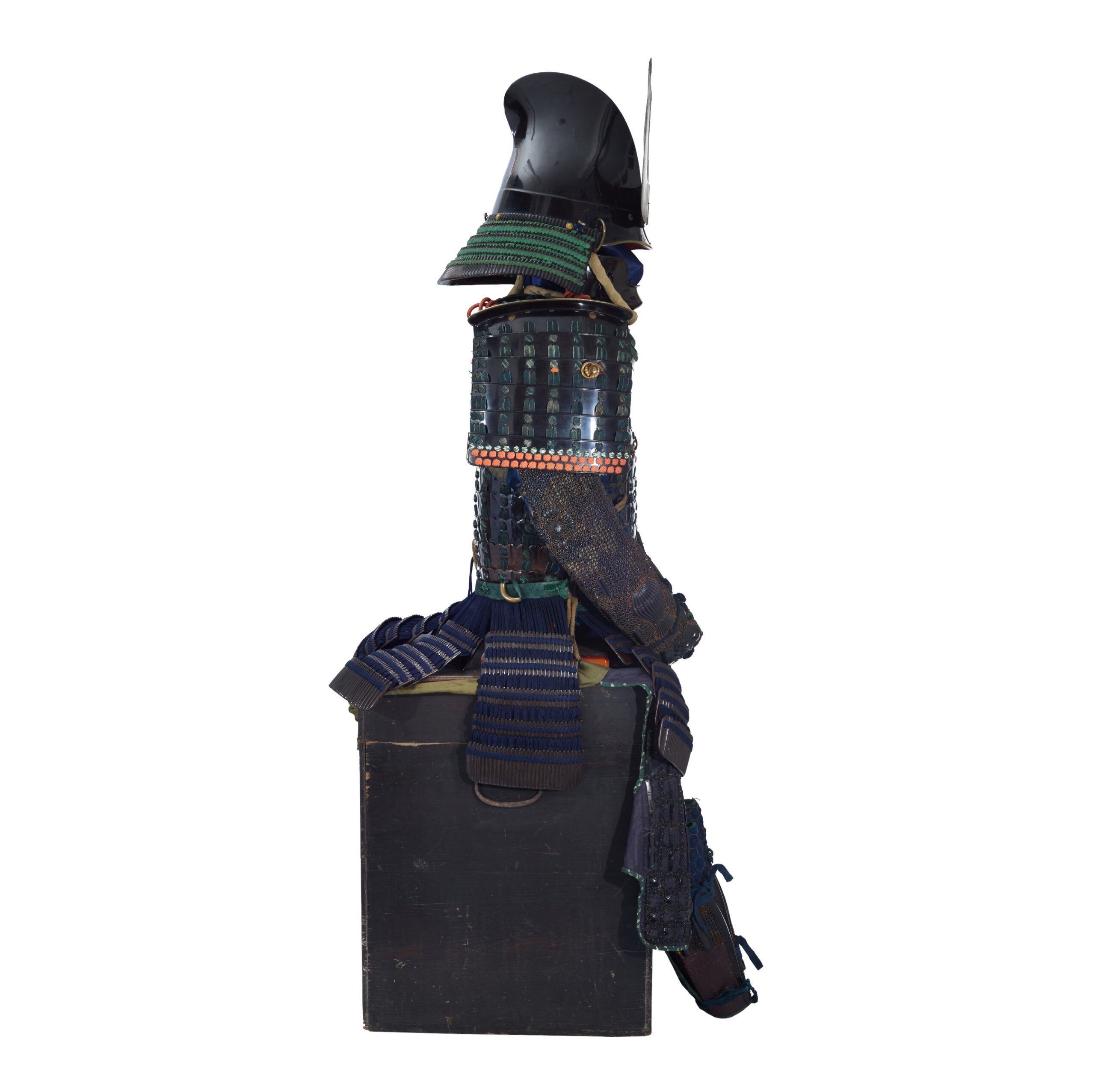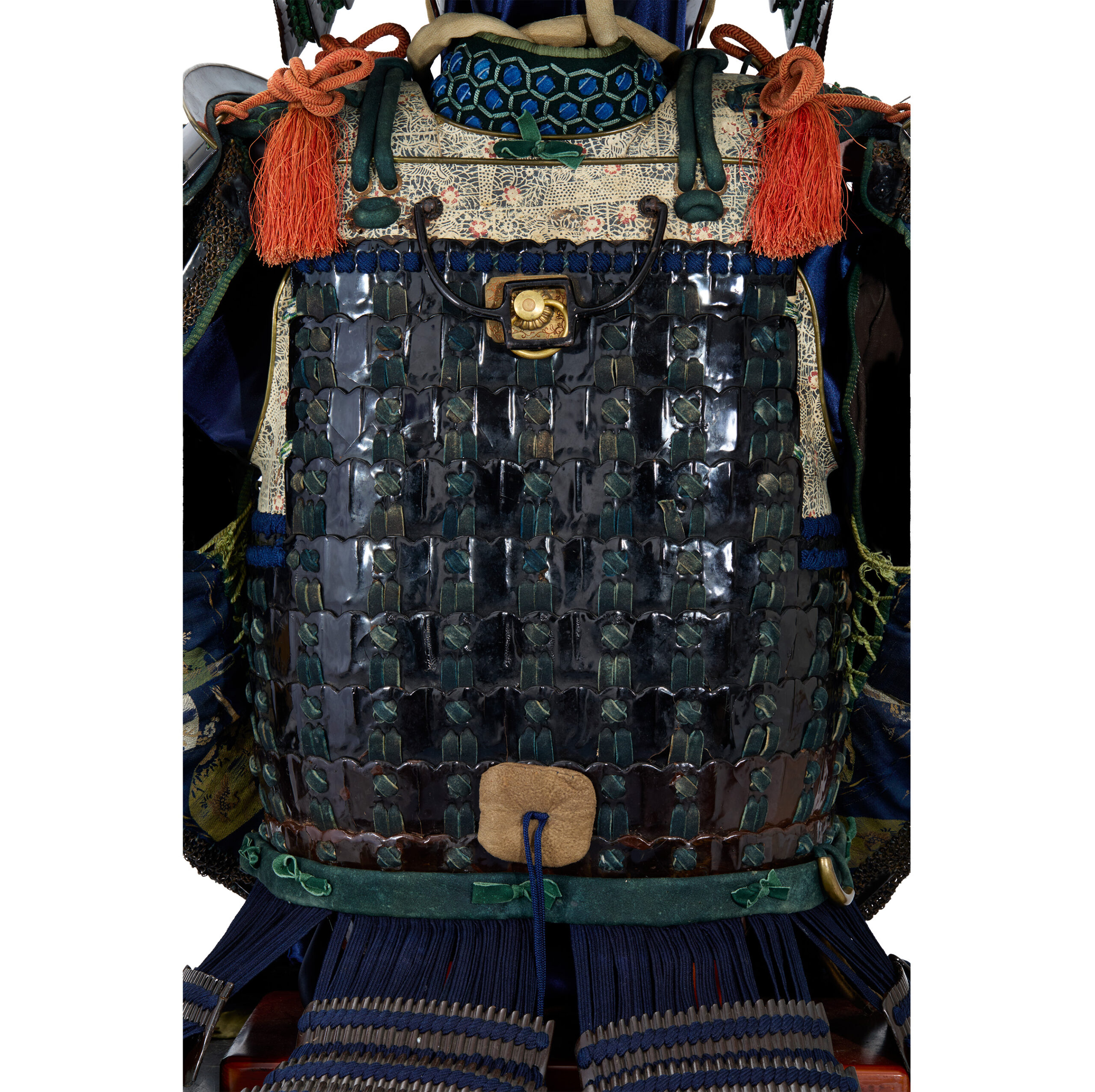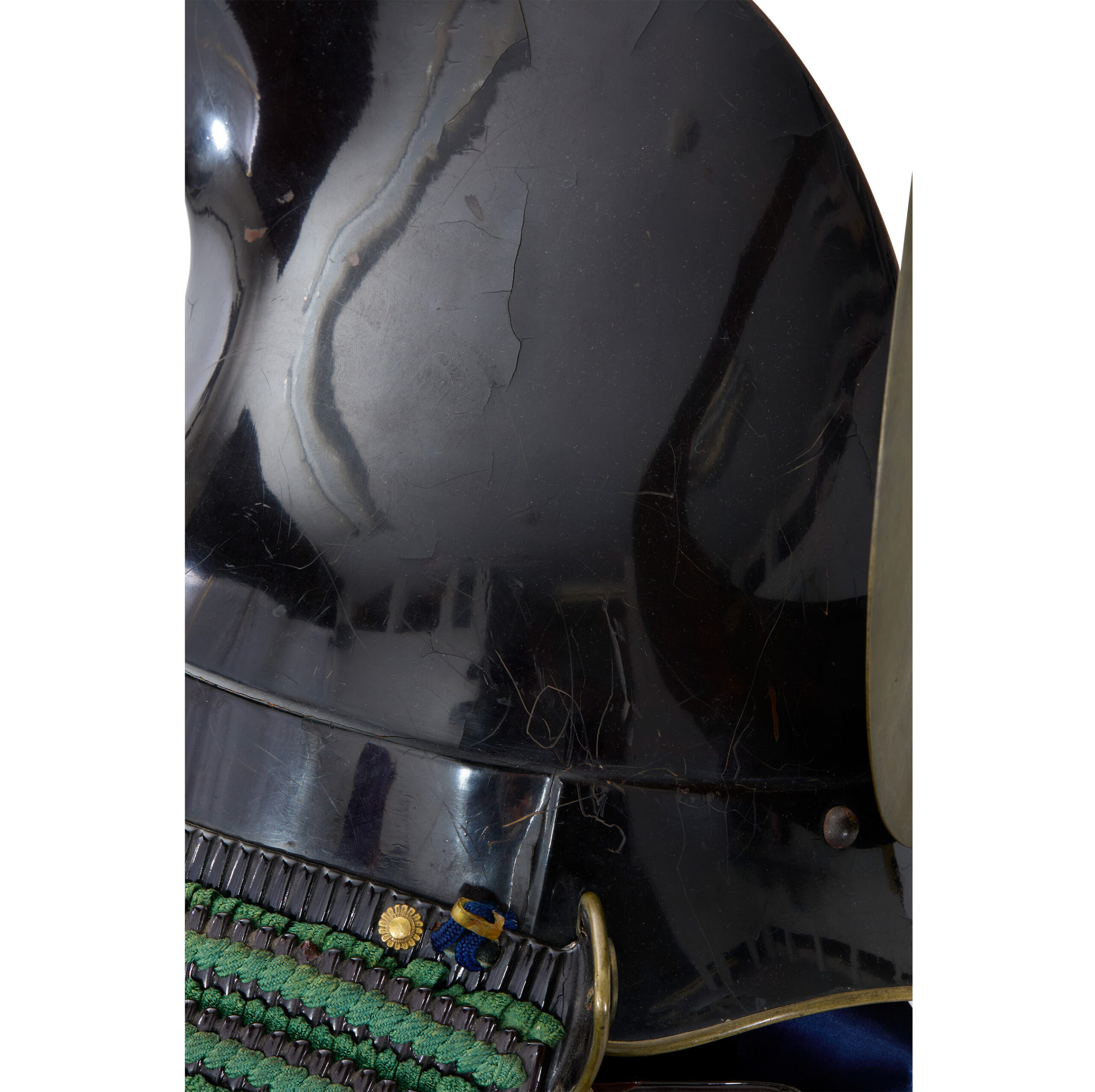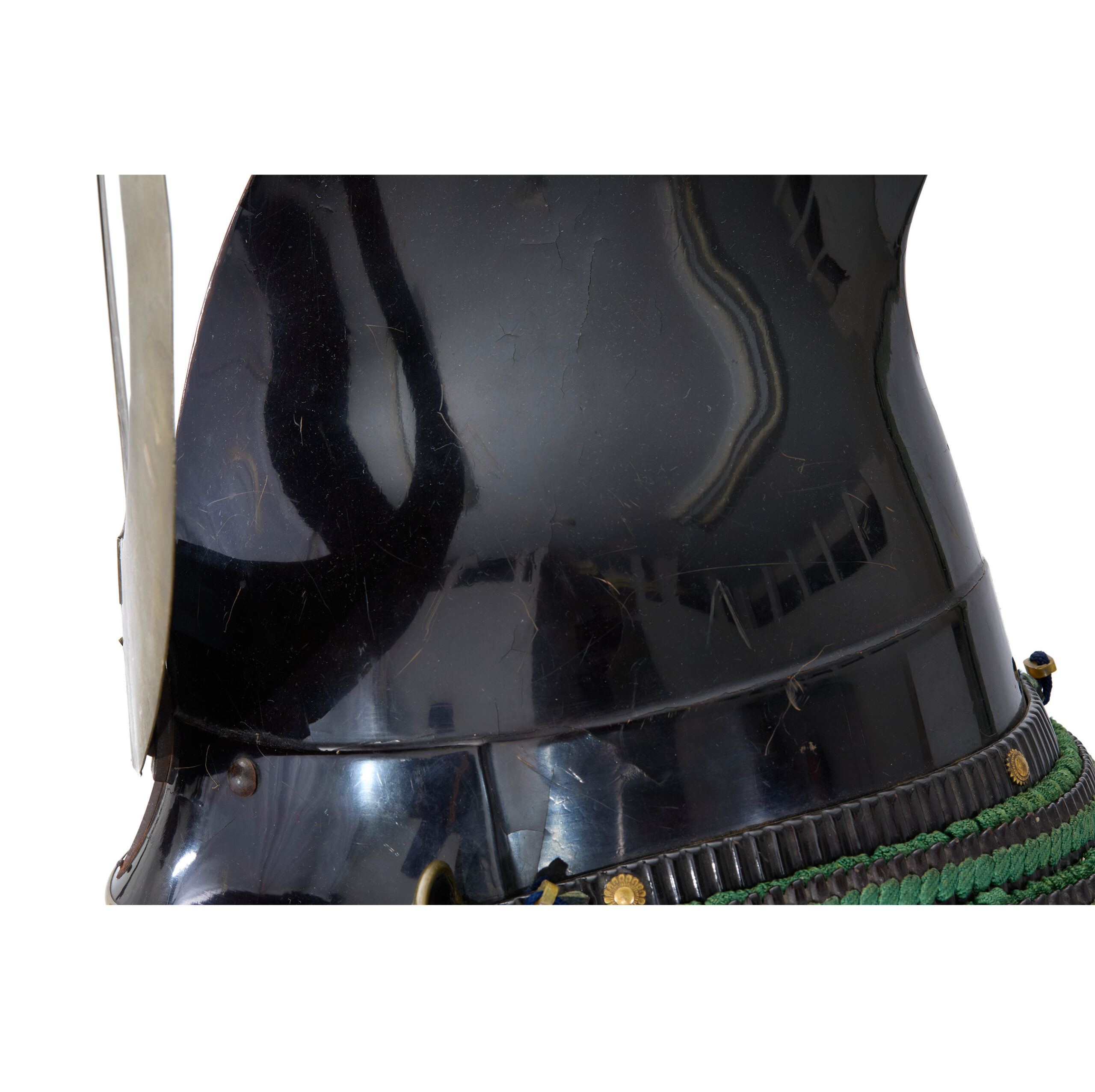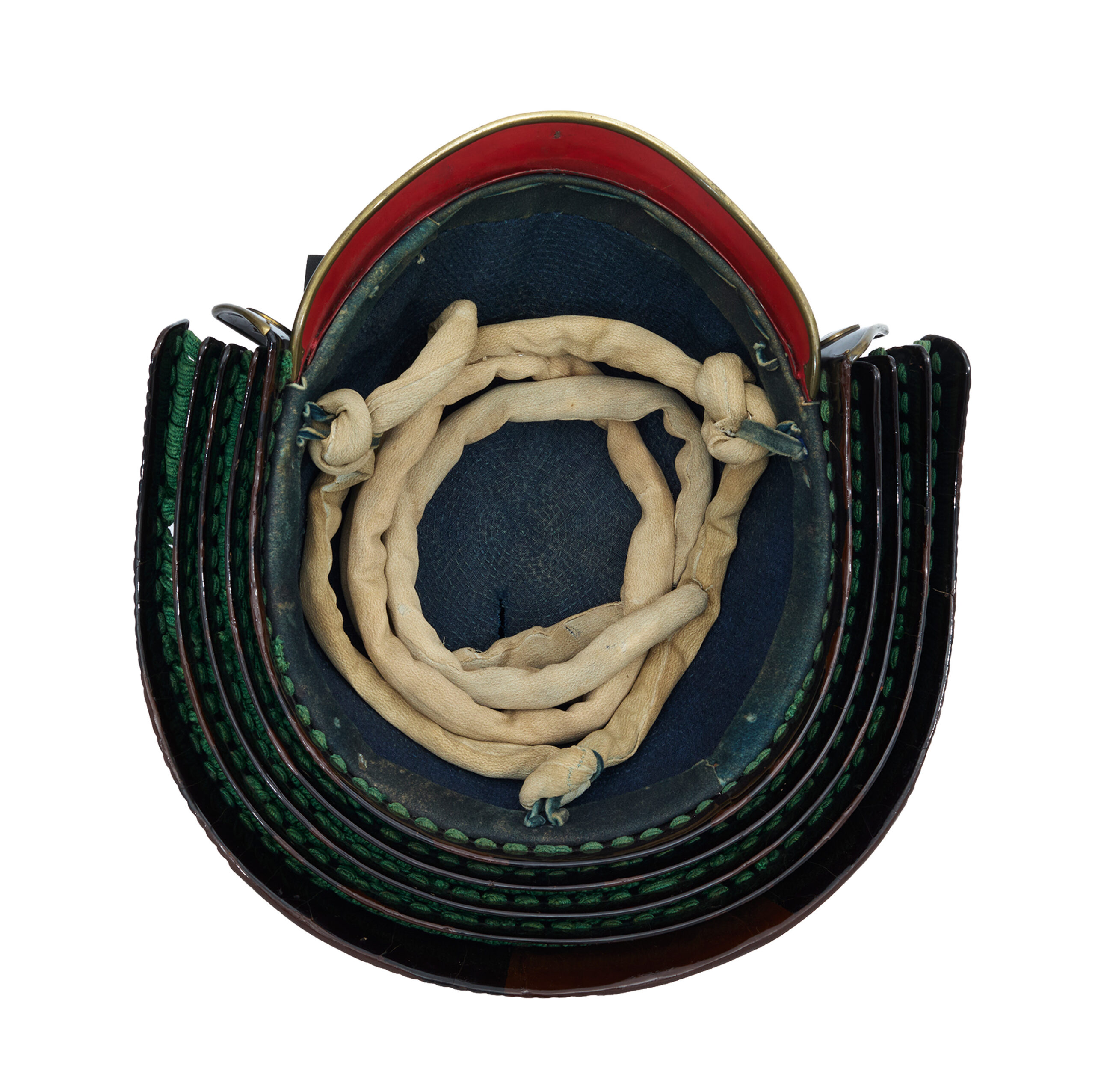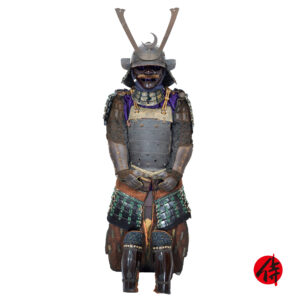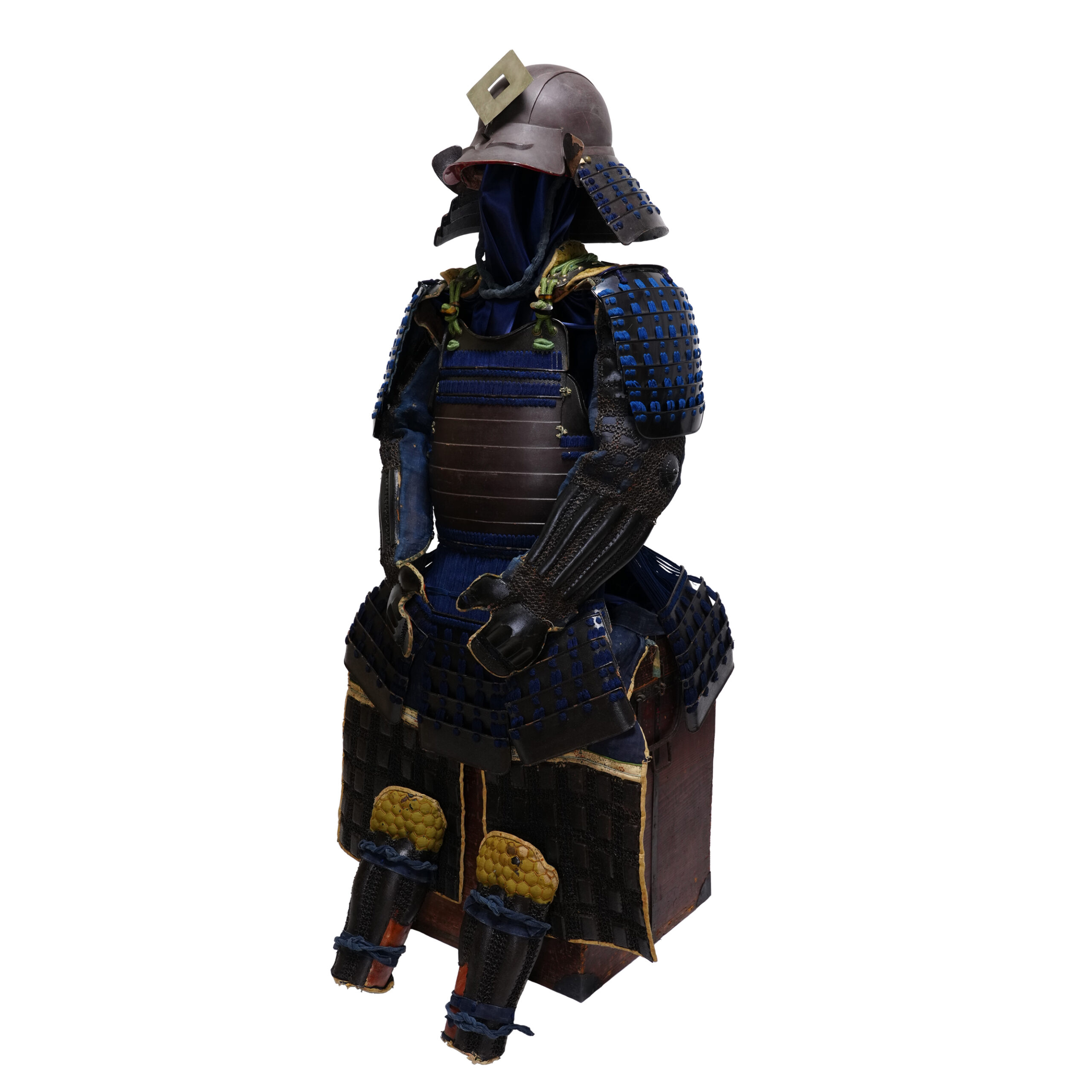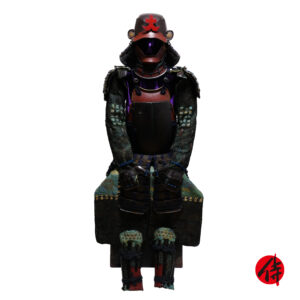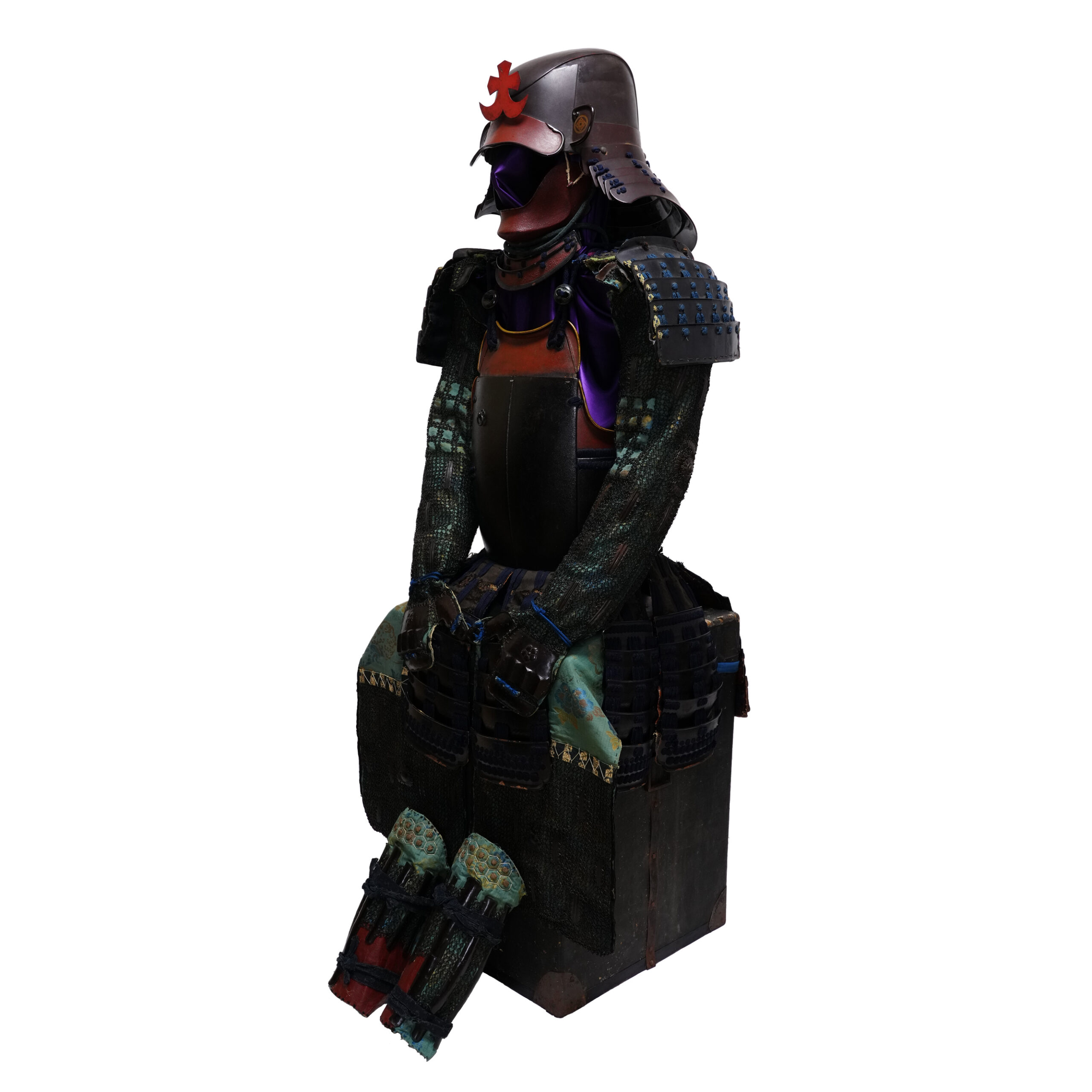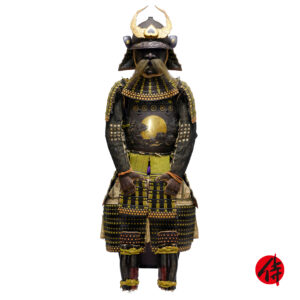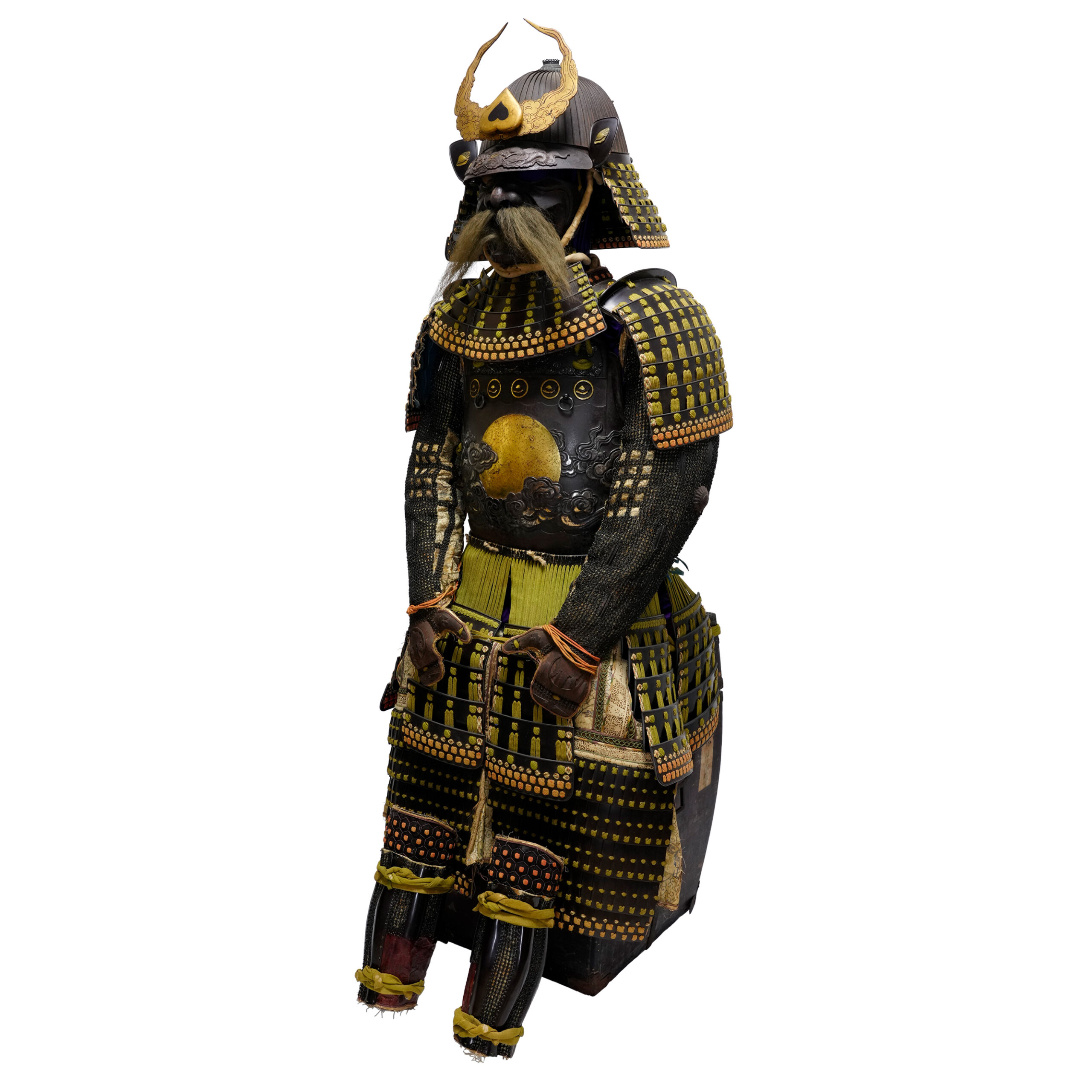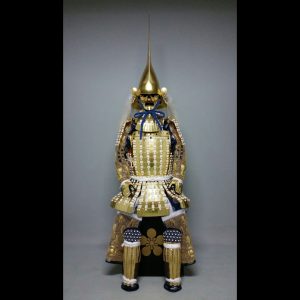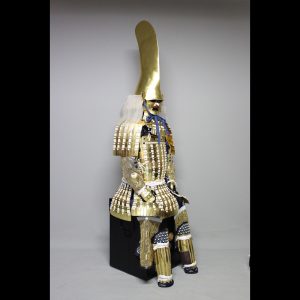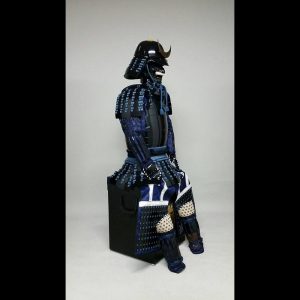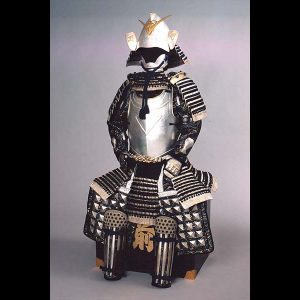Antique Late Edo Period Samurai Armor with Kicho Certificate (A-49)
Period: Late Edo period (1801-1844)
appraised by The Association for the Research and Preservation of Japanese Helmets and Armor on May 11th.
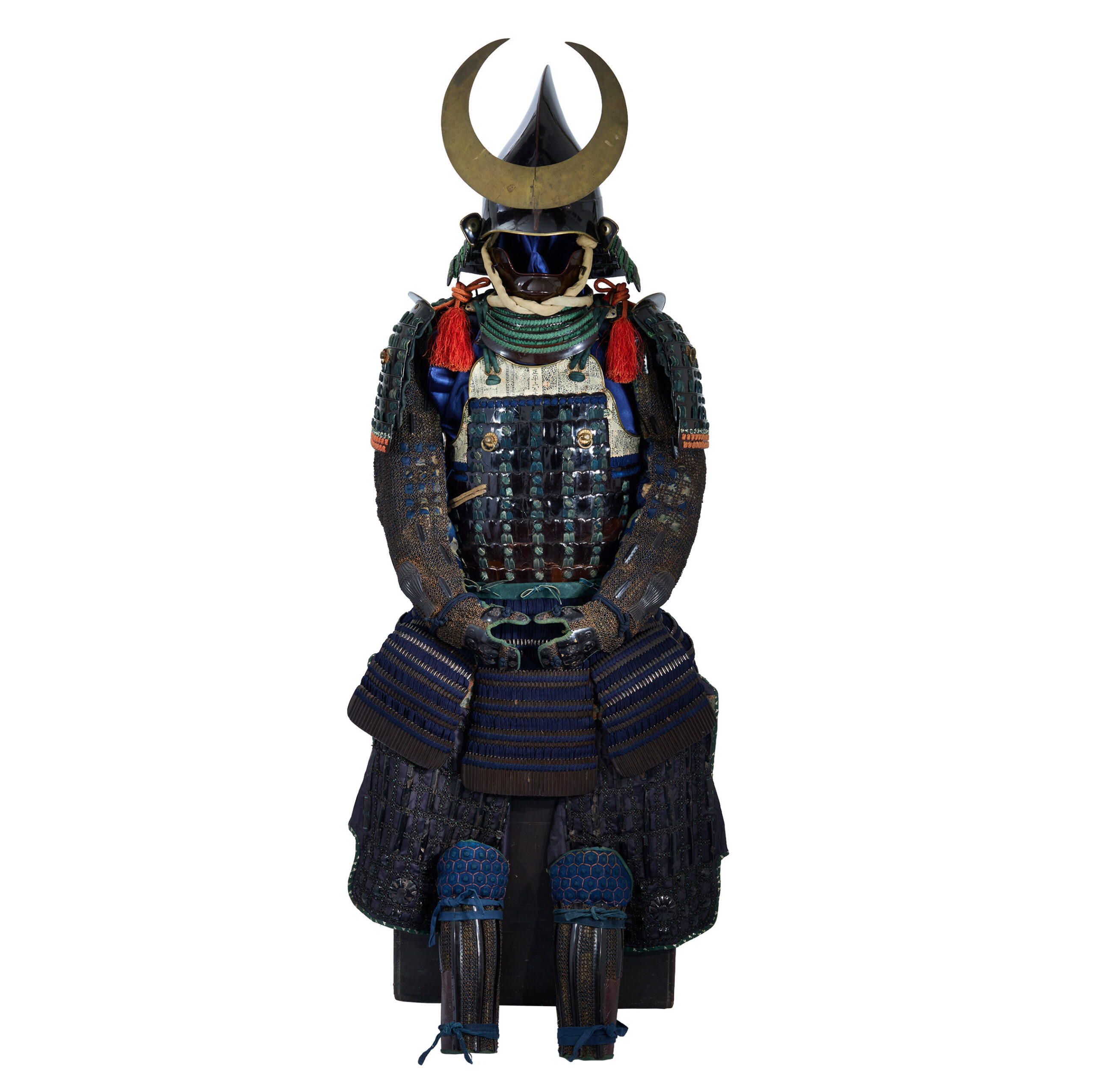
Kabuto (helmet)
Prime Material: Iron
The Kabuto (兜, helmet) is a protector for the head. When people started using the Kabuto, it was initially designed for practical use. However, the principal purpose of its design has changed with time; Samurai tried to express their dignity, personality, or religion by wearing the characteristic designed Kabutos. According to a theory, these uniquely designed Kabutos were made from the late Muromachi (1467-1573) period to the Edo (江戸, 1603-1868) period. This type of Kabuto is categorized as the Kawari Kabuto (変わり兜), and a variety of materials were used to create them. For example, animal fur, seashells, plants, and paper were used as materials for decoration. This Kabuto has a unique design, which looks like the Eboshi (烏帽子, headgear worn by nobles in court dress).
*Please keep in mind that there are a few areas where you see some scratches on the surface of the lacquer as well as light cracks due to its age.
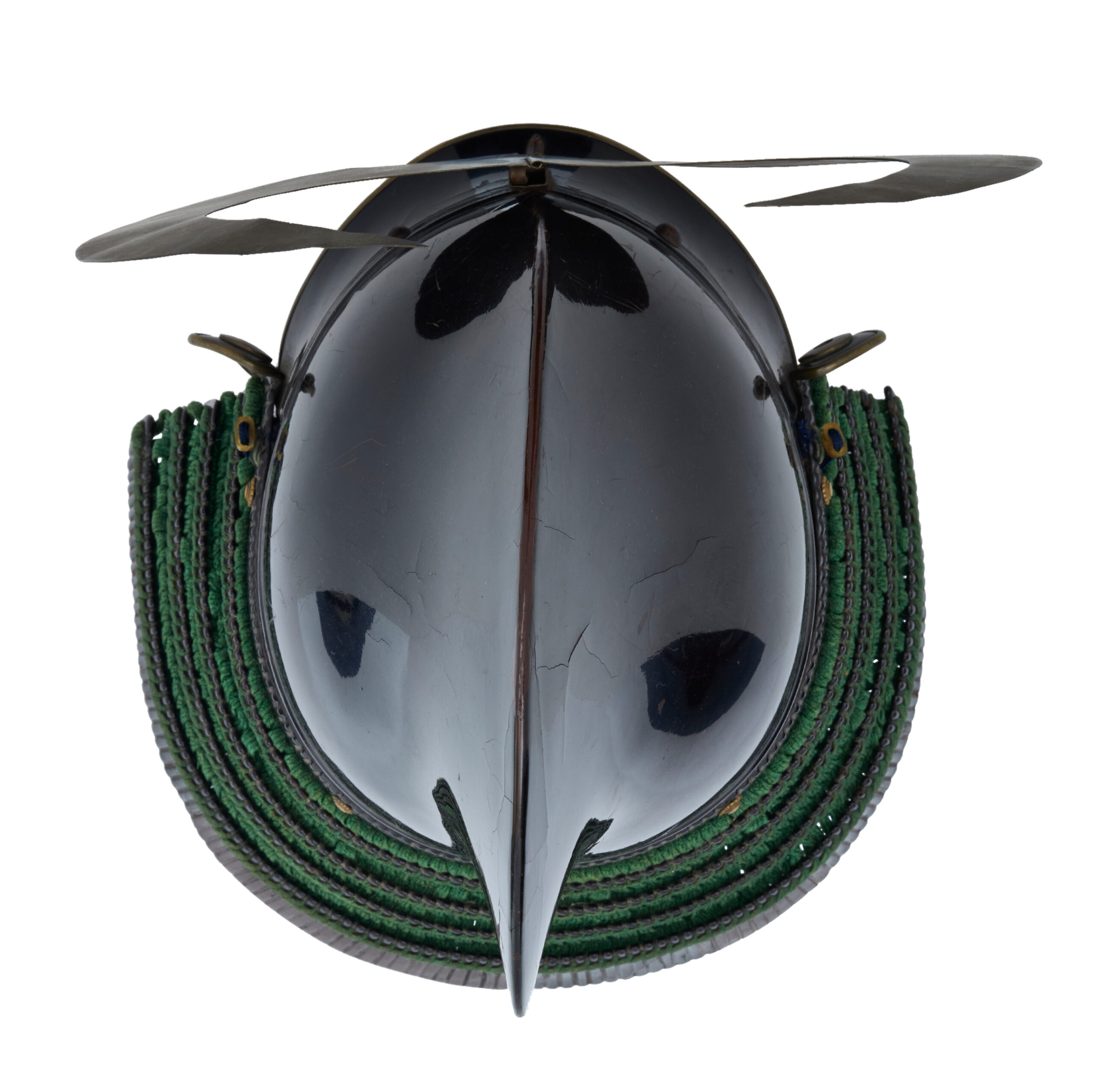
■Shikoro (side neck guard):
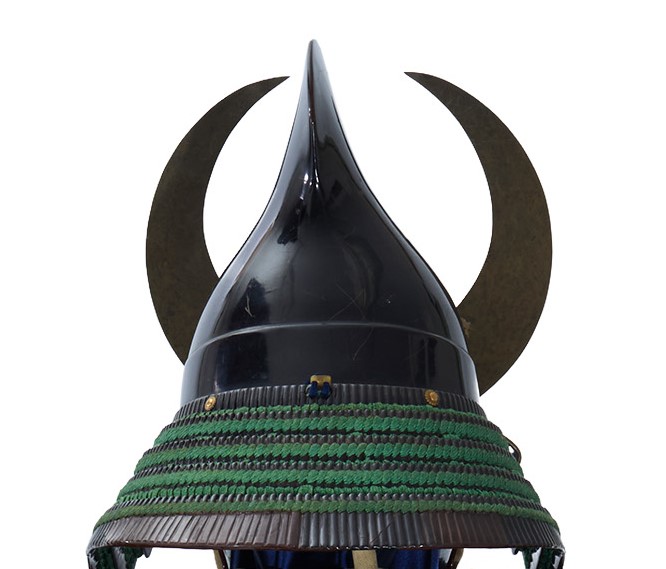
■Fukikaeshi (side neck guard): Janome
The Fukikaeshi (吹き返し) is both ends of a helmet. It protects the face from swords. The motif of this Fukikaeshi is a family crest called Janome (蛇の目). In Japanese, Janome means snake’s eyes, but this design of the family crest originally comes from a weapon. On well-known Samurai family that used this crest was that of Kato Kiyomasa (加藤清正).
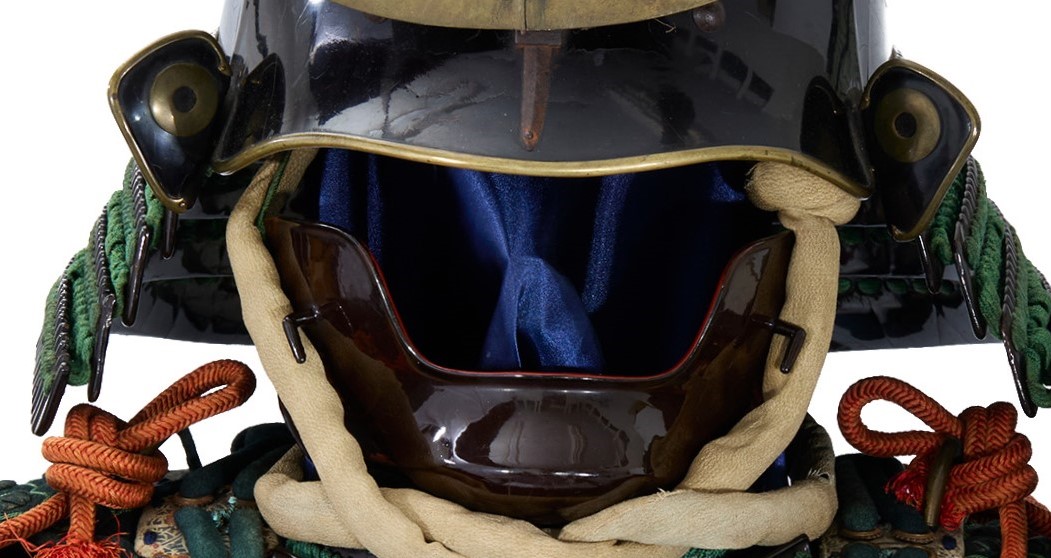
■Menpo (face guard): Hanbō
This type of half mask is called the Hanbō (半頬) and was popular as it was easy to breathe compared to the full mask that covers his nose. The purpose of Menpo was not only to protect Samurai’s face. But also to hide their true faces so that their psychological states were not affected.
■Kuwagata (Front decoration):
The Maedatemono (前立物, front decoration) is attached to this Kabuto. We estimate its shape imitates a type of the moon called a Mikaduki (三日月, crescent moon). We imagine that its golden color caught people’s eyes on the battlefields. According to a theory, the crescent moon designs of Maedates came from the Myouken (妙見) belief. This religion was born in India. It was mixed with the Polestar belief and was brought to Japan from the continent. In the Myouken belief, the moon and stars were the symbols of faith. The Myouken Bosatsu (妙見菩薩, 菩薩 means Bodhisattva) fulfills all wishes such as fertility of rich harvest, peace, the prosperity of the clan, healing of illness, longevity, success in business, traffic safety, academic achievement, marriage, etcetera. Reasonably, the moon motif for a Maedate was popular among Samurai warriors. The former owner of this armor might have shown his faith by wearing this Kabuto. One of the famous Samurai who used this type of Maedate was Date Masamune (伊達 政宗, 1567-1636). He took over the family estate at the age of 17 and contributed to the prosperity of the Touhoku (東北) region. It features a sizeable crescent-shaped decoration and is a popular design even in modern times for replica products.
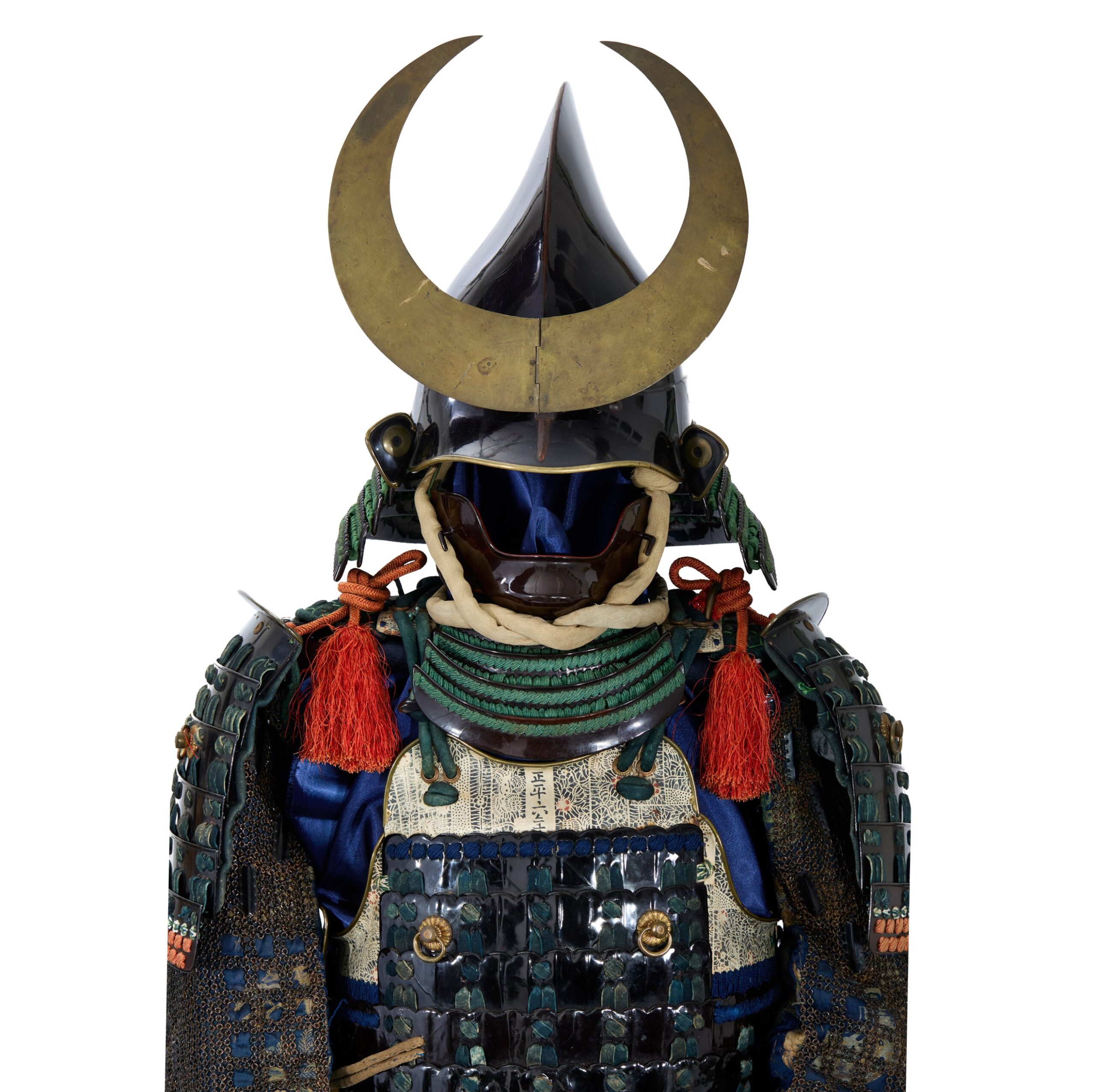
Armor
■Do (cuirass): Okegawa Nimai Do
Nimai Do is a kind of cuirass for Tousei Gusoku (当世具足, developed armor style). Nimai Do (二枚胴) was named after the fact that Nimai (二枚) means two plates, and Do (胴) means torso in Japanese. Instead of using a large number of small lamellar plates called Kozane (小札), this cuirass used large iron plates riveted.

■Decoration on body armor:
It features Shōhei-gawa, a type of dyed leather decorated with a combination of motifs such as lions, peonies, and arabesques, along with the inscription “Shōhei 6, June 1st.” The year Shōhei 6 corresponds to 1351, when the shogun Prince Kaneyoshi is said to have commissioned leatherworkers to create it.
Also, the pattern designed on this leather is called Shishi Botan (獅子牡丹), which is a combination of Karajishi (唐獅子, lion) and Botan (牡丹, peony). While lions have been known as the “king of beasts”, peonies have also been called the “king of flowers.” Therefore, this combination motif has been favored since ancient times.
The Shishi (獅子) means a lion in Japanese, and the Karajishi is a lion brought from the continent to Japan in the Toh period (唐, Tang dynasty, 618-907). The Karajishi typically has curly hair for its head, neck, body, and tail, as seen on this work. In Buddhism, the Karajishi is regarded as a symbol of wisdom, and Monju Bosatu (文殊菩薩, Manjushri Bodhisattva) rides lions. According to a theory, the Karajishi is the origin of Komainu (狛犬, stone guardian dogs that exorcize evil spirits). It shows this animal motif has been familiar to Japanese people since ancient times.
There is a Houwa (法話, Buddhist monks tell the story of Buddhism in an easy-to-understand manner) that treats the Karajishi and this flower. The lion is called the king of the beasts. However, even this invincible animal has only one fear: a bug in the lion’s body. This pest grows in the lion’s hair and eventually breaks the skin and bites the flesh. Nevertheless, it dies if it is exposed to the night dew of a peony. Therefore, the lion rests under peony flowers at night, looking for a haven. The design of these sword mountings might have been quoted from this story.
Peony represents happiness, wealth, nobleness, and gorgeousness. This flower pattern has been treated as a kind of good-omen motif; people regarded it as a rich harvest sign. Peony is called “Botan” in Japanese. When we write this flower’s name in Japanese, its second letter means mountain hermit medicine that would give us eternal youth. Based on the meaning of this letter, the peony pattern symbolizes eternal youth and longevity.
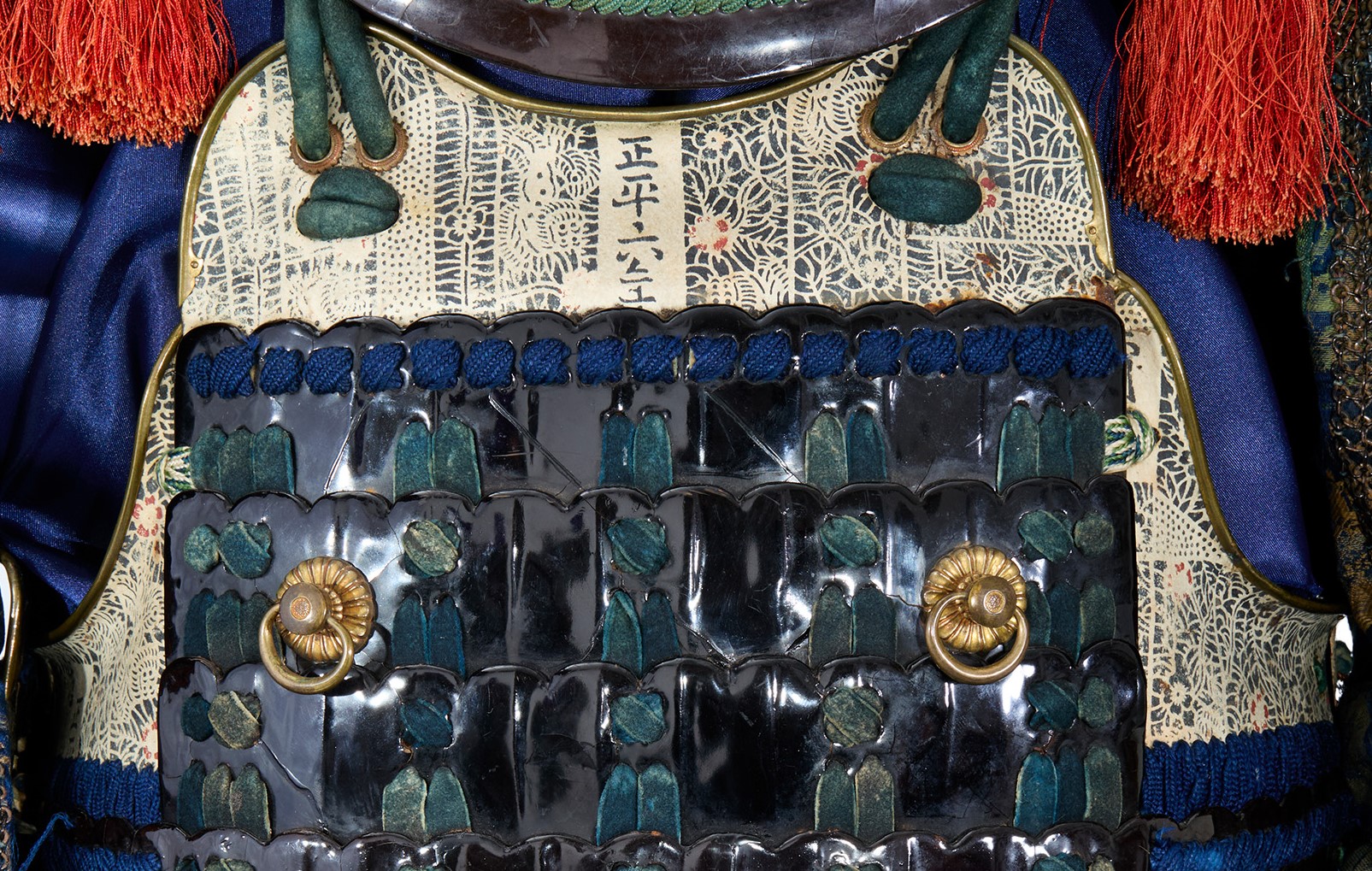

■Kusazuri (skirt of plates attached to the cuirass)
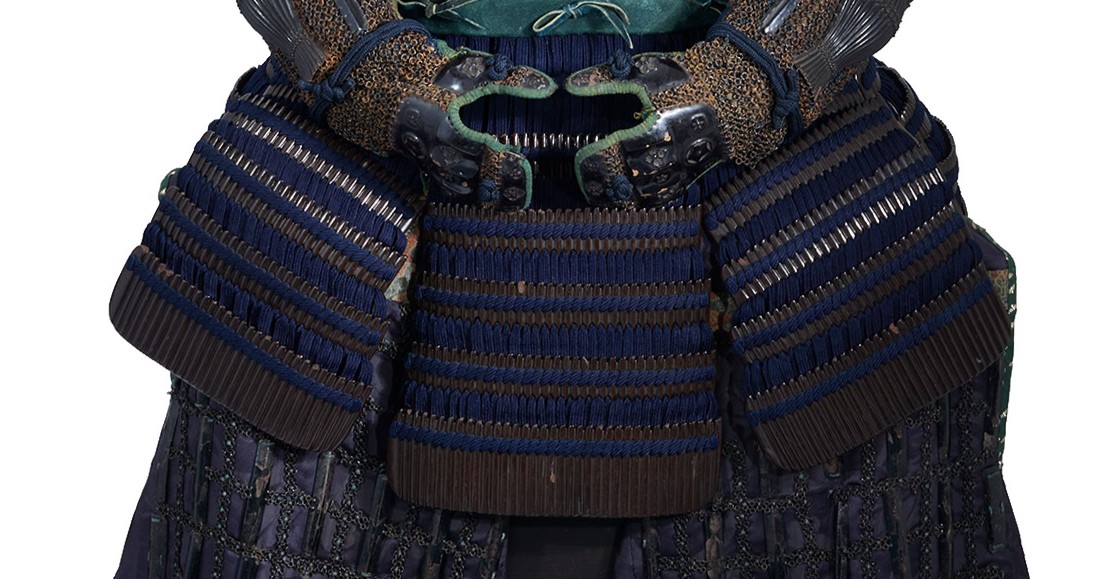
Small parts
■Kote (armored sleeves):
Intricate iron chain mail with silk.
The Kikyo pattern is decorated on this Kote. Kikyou is a small star-shaped flower. It is said its root has medicinal efficacy. The Kikyou pattern has often been used as a motif of Tanka (短歌, a kind of traditional Japanese poem) and pictures since the Heian period (794-1185). Its name was initially “Kichikou,” and it changed to “Kikyou” with time. It is said this flower was used for fortune-telling in the old days. This action is called Kikkyou-wo Uranau (吉凶を占う) in Japanese. The word Kikkyou (吉凶, good or bad omen) was associated with this flower’s name. “Kichikou” was compared to the word “Kichi Kou (吉更),” which means further good fortune. That is why this flower pattern is treated as a good omen design.
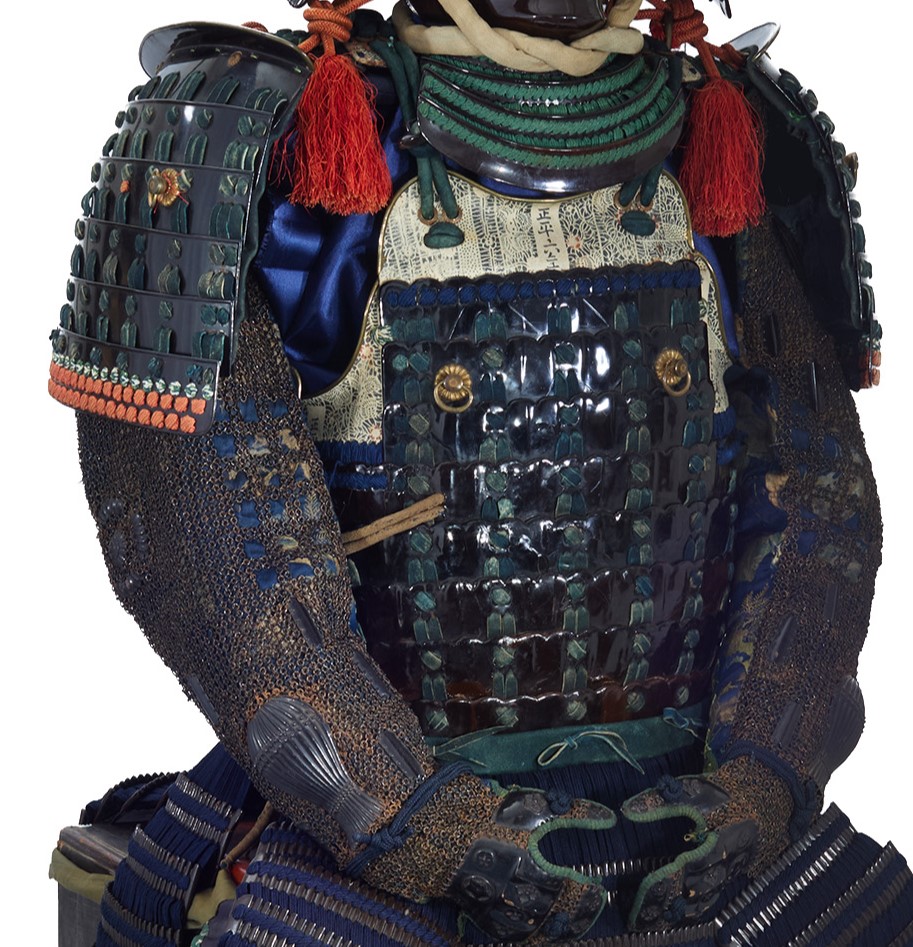

■Haidate (thigh protection):
The Haidate (佩楯) is a thigh guard. Small rectangular black iron plates are attached to the cloth.
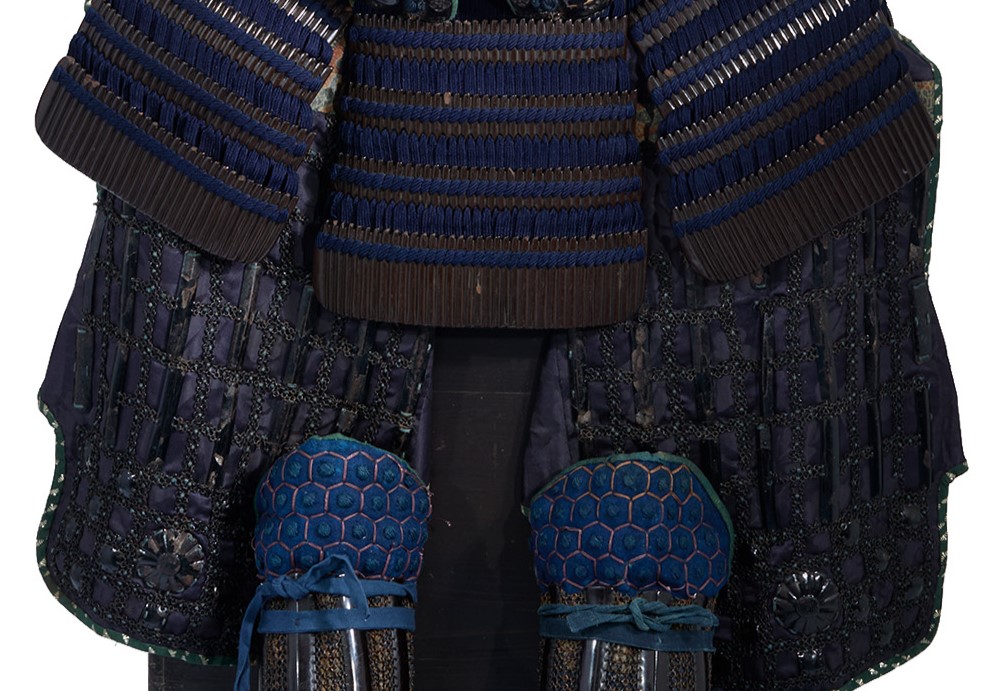
■Suneate (shin guard):
The Kikkou (亀甲, turtle’s shell) pattern is used for the cloth of the Suneate (脛当). It is a continuous geometric pattern connecting regular hexagons up and down. A theory says that this design was brought from China and the Korean Peninsula during the Asuka (592-710) and Nara periods (710-794). A proverb says turtles live long lives; therefore, turtle and turtle’s shell patterns represent longevity. In addition, as this continuous hexagonal pattern does not get out of its shape, it is said people wished for eternal prosperity by using this design.
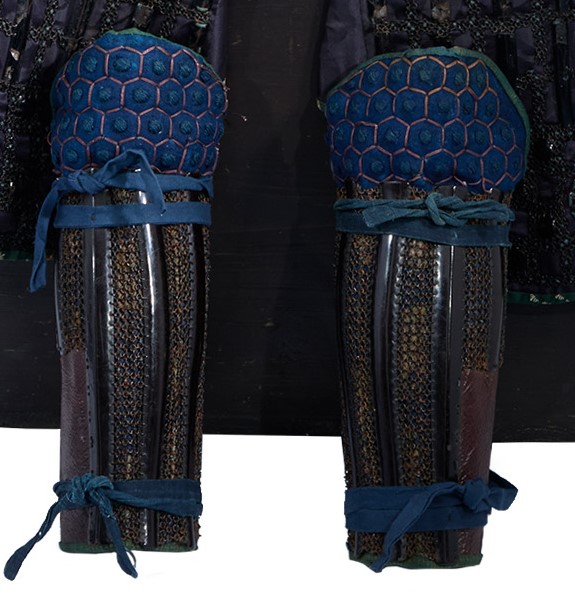
Certification: Kicho Shiryo Certificate
On May 11th 2025, this armor was appraised as a Kicho Shiryo by The Association for the Research and Preservation of Japanese Helmets and Armor, which is the most trusted Japanese armor appraiser in Japan. This association is also known as Nihon Katchu Bugu Kenkyu Hozonkai (日本甲冑武具研究保存会). Kicho Shiryo (貴重資料) means rare article. It is ranked as the 4th highest of five rankings.
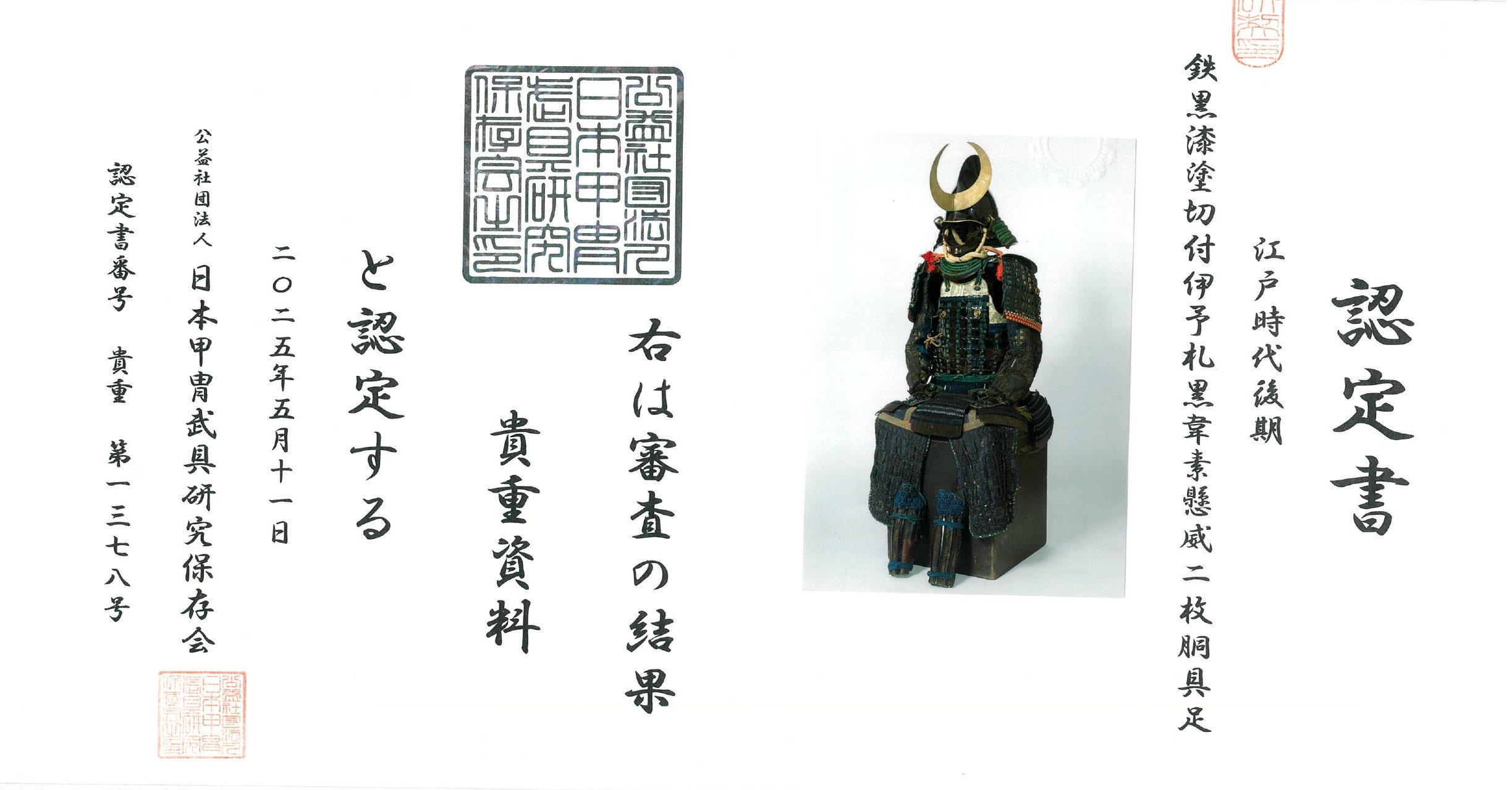
An English translation of the certificate is available on request. We won’t charge any additional fee.
【About us】
Samurai Museum is located in Tokyo, Japan, exhibiting antique artifacts related to the Samurai history. Samurai Museum Shop is the place for those who are interested in Japanese culture and craftsmanship. We deal with antique Samurai swords/armor, traditional crafts made in Japan and so on.
【Antique Japanese Armor and Export process】
After receiving the full payment from you, we will apply for its export permit from the agency for Cultural Affairs to legally export the antique Samurai armor to other countries. It normally takes around 2-4 weeks to receive this permit. And we would like you to expect at least 1-1.5 months for your order to arrive at your given address after you ordered.
【Payment method】
We accept payment through Stripe (Credit card), PayPal, Apple Pay or ChromePay, all of which are secure payment methods. Also, you don’t need to make an account on Stripe for the checkout. If you prefer other payment method, please contact us. You may either pay in JPY, USD, AUD, CAD, EUR, CHF or GBP. The price is set in Japanese Yen. Prices in other currencies are automatically calculated based on the latest exchange rate.

【Shipping duration】
We normally ship via EMS (Express Mail Service) provided by Japan Post. It usually takes at least 5-14 days to deliver the package after you place an order. We offer Free International Shipping as long as we can ship your order by EMS. If you prefer other shipping carriers, please contact us.
We will inform you of the order’s tracking number via email. Please make sure you fill out your valid email address correctly.

【How to make sure the condition】
Please keep in mind that what you are going to purchase is an antique item. We uploaded high resolution photos for you to check its condition thoroughly. If you like to see more photos with different angles, please feel free to contact us. We will be happy to send them to you so that you can make informed decision. It is essential for us to know that you are happy with your choice of a sword. and we are prepared to use the best of our ability to serve you.
【How To Contact Us】
Please contact us through email, Facebook Messenger or Live Chat if you have any questions. You can find each icon on the right side of the website. Please click one of them to reach us. We will reply to you within 1-2 business days.
【How To Preserve Antique Samurai Armor】
Dryness, humidity, and bad ventilation might deteriorate the condition of antique Samurai armor. The best temperature to preserve Samurai armor is around 20℃ in Celsius, and humidity should be about 60%. Direct sunlight should be avoided. We recommend storing armors in a room with good ventilation. If you like to display them outside the boxes for a prolonged time, we suggest using a glass case in order for dust not to be accumulated easily. In case you don’t use a glass case, please make sure to regularly dust off from the armor by using a soft brush made of delicate cloth or brush for painting.
If you like to know more about the preservation of this armor, please feel free to contact us.
